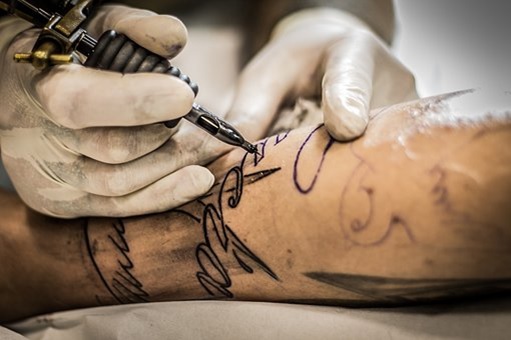They might be all the rage in your city these days, but the traceable history of tattoos goes back as far as 5 millennia ago. While some people get them for aesthetic purposes, others get them to preserve memories, express their passion, or pass a message. But regardless of the purpose, there comes a time when you decide to wipe it out. The good thing is that these days, tattoo removal is not as challenging as it used to be back in the day. With advancements in technology, tattoo removal is easier and much more effective; you no longer have to feel “married” to your tattoo. Whether you want to erase it for a new one or you just don’t find it fancy anymore, here are a few things you should know about tattoo removal.
How Tattoo Removal Works
Before you visit your dermatologist or tattoo artist for tattoo removal, it is important to note that there are various options for you. Despite the reason you want to remove your tattoo, laser removal is the most popular option. As stated on this page, laser tattoo removal treatment is nowadays safer, thanks to the cutting-edge technology available these days. As long as you’re working with an experienced specialist, you don’t have to worry about ugly skin lesions, marks, scars, and other aftereffects of tattoo removal.
During the procedure, the laser beam goes into your skin’s dermis layer, where it makes contact with the ink and disseminates it into smaller particles. These particles of broken-down ink are then disposed of by the body through the lymphatic system. Alternative tattoo removal methods such as dermabrasion and surgery are also available but these tend to have various unwanted side effects like scarring. Dermavel can help you remove tattoos and other blemishes safely so take a look to learn more.
When going for the procedure, the professional assisting you must have the proper personal protective equipment on. That would include a mask, a hairnet, and a pair of sterile nitrile exam gloves. With the PPE on, you can be confident that they keep you safe from germs, bacteria, and other pathogens that could be around. You might also want to bring a pair for yourself in case the professional would ask you to hold your skin during the procedure. This way, you can be sure that any dirt on your hands would not get to your skin and potentially cause an infection.
The Process May Vary a Bit
Whether you choose laser treatment or surgery, the tattoo removal process may vary from one person to the other. This may depend on factors such as the kind of tattoo being removed, its size, ink type, color, and tattoo removal method. For instance, black tattoos are often easier to remove and may require fewer sessions using traditional laser tattoo removal, which is also known as nanosecond laser treatment. With the latest technology known as picosecond lasers, however, it has become easier to remove colored tattoos of green and blue shades.
Removal May Take a While
The sad truth about tattoo removal is that it might take more time than you anticipated to get rid of the ink and get your original skin appearance back at the tattoo site. More often than not, it takes anywhere between 6-8 treatment sessions or more for a tattoo to completely disappear and the area to heal with laser treatment. The more saddening fact is that your sessions to get a tattoo removed could be as far wide apart as eight weeks! In each of these treatments, the pigment broken down by the laser needs to be cleared by your immune system, which also needs some time to re-energize to avoid allergic reactions. If you expected your tat to clear up after just one treatment, take a chill pill and give it a few months before you make plans for your next skin decoration.
Some Pain is Involved
Well, as long as you got a tattoo, pain may not be a big deal. However, it is worth knowing that tattoo removal can be painful as well. During the removal procedure, various approaches may be used to minimize pain. For instance, the specialist may apply numbing cream or use ice to reduce pain from the laser treatment, especially for smaller tattoos. Moreover, the extent of pain may also depend on where the tattoo being removed is located. Of course, tattoo removal from the more sensitive parts of the body can be extra painful. In some cases, a local anesthetic may be used to reduce pain and discomfort during the procedure.
It May Have Certain Risks
Tattoo removal is almost like a regular medical (cosmetic) procedure. Even with laser treatment, it may come with several risks, including scarring, skin discoloration, and darkening. This makes it important to seek treatment from a certified dermatologist or physical who is experienced with laser tattoo removal. They will know just the right laser wavelength to use for your specific case and how long each procedure should take to avoid unpleasant after effects. Based on your medical history and overall health, a qualified physician will also help determine whether you’re fit for the laser removal procedure.
Costs
Finally, tattoo removal doesn’t come cheap. Due to the expertise required, the advanced technology used, and the length of time it takes, it will possibly sting most people’s wallets. An average tattoo can cost anywhere between 200 and 500 dollars or more per session to remove. More often than not, removal is more expensive than getting the tattoo.
When considering getting your tattoo removed, it is important to consider your options carefully. Think about your safety, shop around, get your doctor’s advice, and do some research before making your final decision. With the above information in mind, it becomes less stressful for you to navigate tattoo removal.























